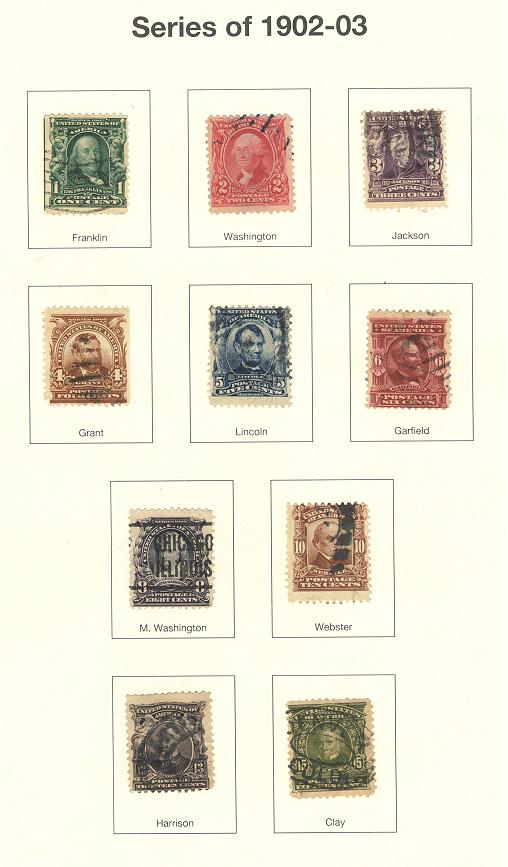
Series of 1902-1903
Franklin: 1 Cent Blue Green. Criticized by the art critics as well as stamp experts, the 1 cent stamp received numerous unfavorable comments. Many felt the portrait looked like a caricature, while the overall design was unbecoming.
Washington: 2 Cent Carmine. When stamp experts saw the beautiful proofs of this stamp in black they agreed this was the finest stamp produced. Unfortunately when the actual stamp was printed in red the result was considered disappointing.
Jackson: 3 Cent Bright Violet. As with the other stamps in the 1902 series Jackson's name, along with the dates of his birth and death appear beneath his portrait. These features were entirely new.
Grant: 4 Cent Brown. On older issues General Grant was pictured on the five-cent stamp while President Lincoln was on the four-cent. However, in the new issues this was reversed so that Lincoln would be on the more widely circulated stamp.
Lincoln: 5 Cent Blue. Designed with the idea of conveying a message of patriotism, Lincoln's careworn and despondent portrait was modeled after a war time photograph. A united country is represented by the two figures- the Condederate and Union armies- clasping on an olive branch of peace.
Garfield: 6 Cent Claret. A great deal of confusion followed the issue of this stamp. Orginally printed in red brown, the stamp was too simular to the ten-cent issue and color was changed to the more distinctive claret.
Martha Washington: 8 Cent Violet Black. When the Post Office Department announced its decision to feature an American woman on a stamp, letters poured in with suggestions as to whom the lucky lady should be. The Department chose America's first lady. This stamp is considered to be the most beautiful of the set.
Webster: 10 Cent Pale Red Brown. A fitting tribute to one of America's most prominent lawyers, orators, and statesmen, the central portrait is flanked by lateral fasces (Bundles of rods containing a axe which were carried before Roman judges to signify their authority).
Harrison: 13 Cent Purple Black. This was the first stamp of the series to go on sale. Used on international mail it prepaid the rate for a 1/2 ounce letter to any country in the Postal Union. 10 cent for registered fee and 3 cents for postage.
Clay: 15 Cents Olive Green. To encourage prosperity and unite the different sections of our nation. Clay proposed the "The American System". This program of national planning included a protective tariff, a national bank and government support of the improvements for better transportation.
<